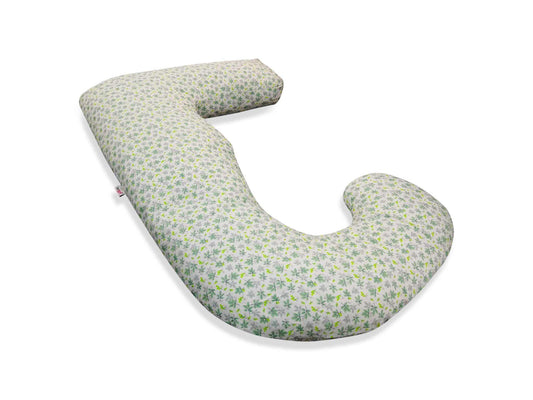Second Trimester Pregnancy Journey | Blossoming into Maternity

Second Trimester Pregnancy Journey : Blossoming into Maternity
Part 2 of a three part Series
Youe First Trimester pregnancy Journey - Essential Aids for the Transformative Second Trimester
This is the second part of a three part series on the three stages of pregnancy. This part of the series aims to provide crucial information on essential aids tailored to this transformative middle stage of pregnancy:
The second trimester of pregnancy is often referred to as the "honeymoon phase" due to the increased energy levels and reduced discomfort experienced by many women during this time.
1. Maternity Clothing for Comfort and Style:
As pregnancy progresses and the baby bump grows, the need for comfortable yet stylish clothing becomes increasingly important. Maternity clothes are specifically designed to accommodate the changing body, providing comfort without sacrificing style. Fabrics that are soft and stretchy, such as jersey knit or cotton blend, can offer significant comfort and adapt to the body's changes. Features like adjustable waistbands, elasticized panels, and ruching can enhance fit and comfort throughout the pregnancy. It's also beneficial to suggest versatile pieces such as wrap dresses, stretchy leggings, and tunics that can expand as the body changes, ensuring that expectant mothers can remain fashionable and confident. Additionally, investing in a few key pieces that can be mixed and matched to create multiple outfits can make dressing easier and more enjoyable during pregnancy. Suggesting clothing that can transition from casual to semi-formal settings can also be incredibly practical, offering expectant mothers stylish options for various occasions.
2. Regular Prenatal Check-ups for Comprehensive Care:
Regular prenatal check-ups are crucial for monitoring the health and development of both the mother and the baby. These visits allow healthcare providers to track the baby’s growth, assess the mother's health, and detect any potential issues early. During the second trimester, these appointments may include various screenings and tests, such as ultrasounds and glucose screening tests, which are important for assessing the risk of gestational diabetes and other conditions. Encouraging pregnant women to maintain a schedule of regular check-ups and to communicate openly with their healthcare providers is essential. This openness allows them to express any concerns, discuss symptoms they might be experiencing, and receive advice on managing aspects of their pregnancy. It's also a time for healthcare providers to offer guidance on nutrition, exercise, and preparing for the upcoming birth. Ensuring that expectant mothers understand the importance of these check-ups can help them take an active role in their healthcare and the health of their developing baby, leading to better outcomes for both.
3. Staying Active with Prenatal Exercise:
Maintaining physical activity remains beneficial throughout the second trimester, continuing the good practices established in the first. It's crucial to promote the continuation of gentle exercises such as prenatal yoga and swimming. These activities not only help pregnant women stay fit but also improve circulation, enhance mood, and reduce muscle tension and cramps, which can become more pronounced as the baby grows. Additionally, regular exercise can help manage weight gain, improve sleep, and boost overall energy levels. Expectant mothers should always consult with their healthcare providers before starting any new exercise regimen to ensure that the activities are safe for their specific pregnancy conditions. This consultation can also provide an opportunity for healthcare providers to tailor exercise recommendations to suit individual needs and address any potential health issues.
4. Nutrition and Balanced Diet:
A nutritious and balanced diet is vital during the second trimester, a critical period for fetal growth and development. Guidance on making healthful food choices should emphasize the importance of a varied diet that includes a wide range of nutrients. Pregnant women should be encouraged to incorporate a diversity of fruits and vegetables, which provide essential vitamins and minerals. Whole grains offer necessary fiber, which can help prevent constipation, a common issue during pregnancy. Lean proteins are important for the growth of fetal tissue, and healthy fats, especially omega-3 fatty acids, support the baby’s brain development. It's also beneficial to discuss the role of specific nutrients, such as increased calcium for bone development and iron to prevent anemia. Educating expectant mothers on reading nutrition labels and understanding portion sizes can help them make informed choices that benefit both their own health and the health of their baby.
First pregnancy? Invest in a body pillow built to last - through every stage and every pregnancy.
5. Hydration:
Hydration is as crucial in the second trimester as it is in the first. Pregnant women should be reminded of the importance of drinking sufficient water throughout the day to maintain healthy amniotic fluid levels, which is essential for the baby’s protection and development. Proper hydration also supports the mother's circulatory system, crucial as blood volume increases to accommodate the growing fetus. Additionally, staying hydrated helps prevent common pregnancy complications such as headaches, urinary tract infections, and hemorrhoids. The recommended daily intake can vary based on the mother's body weight and environment, but generally, drinking at least eight to ten glasses of water a day is advised. Including water-rich foods like fruits, vegetables, and soups in the diet can also help meet hydration needs.
6. Finding Comfort When Sleeping:
Pregnancy pillows can be used at any stage of pregnancy, but many women find them especially helpful from the second trimester onwards. As the belly grows and sleeping positions become more limited, pregnancy pillows provide much-needed support and comfort.
The best time to start using a pregnancy pillow is when you begin experiencing discomfort during sleep. Listen to your body — if additional support helps you rest better, it may be time to introduce one. A pregnancy pillow is a great investment in maintaining comfort and promoting restful sleep throughout your journey.
As your pregnancy progresses into the second trimester, many mums-to-be experience backaches, pelvic pressure, or disrupted sleep. A supportive full-body pillow, like our U-shaped pregnancy pillow, offers the alignment and cushioning needed for better rest and posture throughout the night.
Here are some general guidelines on when and how to use pregnancy pillows:
-
Second Trimester: This is when physical changes start to noticeably affect sleep. A pregnancy pillow can help alleviate discomfort by supporting the back, hips, and belly, encouraging better spine alignment and relieving pressure.
-
Third Trimester: As the bump becomes heavier, comfortable sleep becomes more challenging. A pregnancy pillow can support the belly, reduce strain on the lower back, and help you maintain a side-sleeping position, which supports healthy blood flow to you and your baby.
-
Types of Pillows: There are several pregnancy pillow shapes — including full-body, C-shaped, U-shaped, and J-shaped pillows. The right one depends on your unique needs and where you need support most, which can change throughout pregnancy.
Using a pregnancy pillow can significantly improve your sleep quality by offering tailored support and easing the discomforts that naturally arise as your body transforms.
Need support as your pregnancy progresses?
Explore our full collection of U-shaped maternity pillows and J-shaped pillows designed to help you rest more comfortably during every trimester.
7. Mental Health and Relaxation Techniques:
Pregnancy can be emotionally challenging due to hormonal changes and the anticipation of major life changes. Managing stress and anxiety is vital for the well-being of both the mother and the baby. Offering practical suggestions for relaxation techniques can significantly aid in promoting mental calm and emotional balance. Meditation can help focus the mind and reduce stress, while deep breathing exercises are effective in managing anxiety spikes by regulating the body's stress response. Gentle prenatal massages can relieve physical discomfort and contribute to overall relaxation. Additionally, activities such as prenatal yoga can also provide both physical relief and mental peace. Encouraging regular practice of these techniques can help maintain a healthier emotional state throughout the pregnancy.
8. Preparing for Labor and Childbirth:
The second trimester of pregnancy is a perfect time to begin preparations for labor and childbirth. This period is typically when expectant mothers feel more energetic and may be more receptive to learning and planning. Encouraging participation in childbirth education classes is crucial as these classes provide valuable information about labor processes, birthing techniques, pain management options, and what to expect during delivery. They also often cover postpartum care, helping parents to prepare not only for the birth but for the weeks following. Knowledge gained from these classes can empower expectant mothers and their partners, reduce anxiety related to childbirth, and enhance their ability to make informed decisions during the labor process.
9. Bonding with the Baby:
As the pregnancy advances, the connection between a mother and her baby grows stronger. Encouraging mothers to actively bond with their unborn child can significantly enhance this natural process. Activities such as talking to the baby, singing favorite songs, or reading aloud can stimulate baby’s early sensory development and foster an emotional connection. Gentle belly rubs and light massages can also be soothing to both mother and baby, reinforcing the bond through touch. This kind of prenatal interaction is believed to help in the baby's cognitive development and can create a foundation for a strong emotional bond post-birth. Moreover, these bonding activities provide a sense of well-being and can reduce maternal stress levels, contributing positively to the pregnancy experience.
10. Partner Involvement and Support:
Involving partners in the pregnancy journey is crucial for nurturing the relationship between the couple and preparing them for shared parenthood. Encouraging partners to attend prenatal appointments and childbirth classes can deepen their understanding of the pregnancy process and what to expect during labor and delivery. This involvement not only helps partners feel more connected to the pregnancy but also equips them with the knowledge to provide effective support during labor and beyond. Emotional support from partners during pregnancy can also alleviate maternal stress and anxiety, fostering a positive environment for both the mother and the baby. Strengthening the bond between the couple during this transformative time can have lasting benefits, positively impacting the family dynamic and enhancing co-parenting cooperation after the baby arrives.
11. Preparing the Nursery:
The second trimester of pregnancy is often when expectant parents feel most energetic and excited about the impending arrival of their baby, making it an ideal time to start planning and setting up the nursery. This period allows for thoughtful decoration and organization of the space without the rush and physical constraints that might come later in the pregnancy. Starting early also helps distribute the workload over several weeks, which can significantly reduce stress as the due date approaches.
When preparing the nursery, it's important to consider both functionality and comfort. Choosing a soothing color palette and incorporating elements that stimulate a baby’s development, such as mobiles and textured toys, can create a nurturing environment. Investing in essential furniture like a crib, changing table, and a comfortable chair for feeding and rocking the baby is crucial. Safety should also be a top priority; ensure that all furniture and baby gear meet current safety standards and that everything is properly installed.
Additionally, organizing supplies like diapers, wipes, baby clothes, and bedding ahead of time can make the transition easier once the baby arrives. Including personal touches, such as family photos or handmade decorations, can add sentimental value and make the nursery a special place for both the baby and parents. This process not only prepares the physical space but also helps parents mentally and emotionally prepare for their new roles, enhancing their anticipation and joy as they await their baby's arrival.
By optimizing and expanding on these essential aids for the second trimester, pregnant women can embrace this special time with confidence and support. As always, remind expectant mothers to consult their healthcare providers for personalized advice and care throughout their pregnancy journey.
Part One: Nurturing the Beginning: Essential Aids for a Healthy First Trimester
Part Three: Nurturing the Journey's End: Essential Aids for the Fulfilling Third Trimester

















